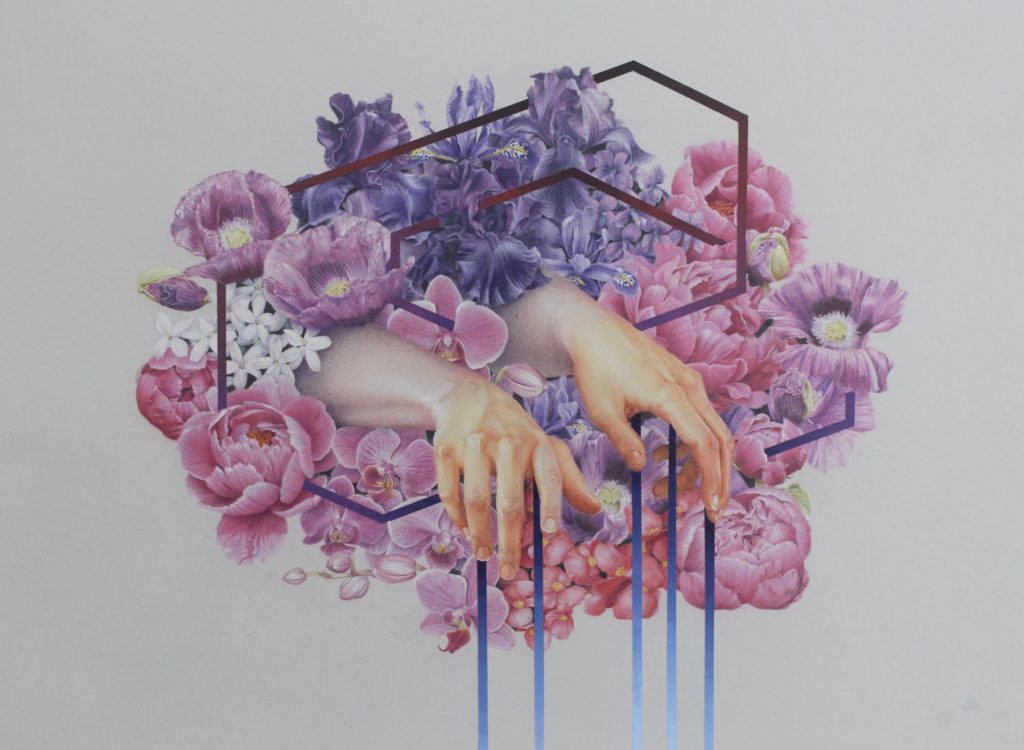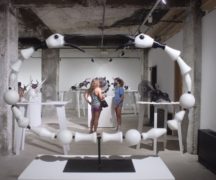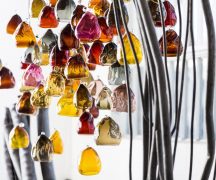By DAVID DUPONT
BG Independent News
Jessica Tenbusch grew up surrounded by plants and animals. Her mother had 400 house plants. And there were many pets, including at one point, 400 parakeets.
One of Tenbusch’s earliest memories of gardening was of her father planting a patch of peonies just for her.
That domestic connection with nature took root, and blossomed into art.
Her newest work, drawings made with colored pencil and acrylic paint, are now on exhibit at River House Arts, 425 Jefferson Ave., in downtown Toledo. Click here for updated gallery hours or to schedule a visit. The exhibit continues through Aug. 22.
“Tangled Gardens Between Us” marks a turn in the Ypsilanti-based artist’ career.
While she had established herself as a metalsmith and sculptor, also working with themes from nature, this marks her first show devoted to her drawings.
The work was done between 2019-2021.
“I always shared my home and my life with other animals I was taught to respect them as much as I would respect any other human beings in,” she said.

With this body of work, she said, she explores the plants and animals that live with and near humans. People don’t think necessarily of this flora and fauna as part of nature, but they are.
“I really think of people as embedded in an ecosystem that they built for better or worse,” Tenbusch said. Each of the drawings represents an ecosystem shaped by the artist.
At the core of the work, she said, are “personal narratives,” about her relationships with the natural world and the other people who inhabit it, particularly her parents.
She had a troubled relationship with her father. They were very close when she was growing up. But when her parents divorced when she was 13, he abandoned her. He struggled for years with addiction to prescription opioids and alcohol. Right before his death, they had begun rebuilding their relationship.
His death was a catalyst for her switching directions in her work.
She had studied drawing alongside her major in sculpture and metalsmithing at Eastern Michigan University where she earned her Master of Fine Arts.
“When I started doing the drawing, I realized that this is what I really wanted to do,” Tenbusch said. “It just spoke to me more than the metalsmithing did.”
The 15 drawings attest to that new found devotion.
Each piece includes highly detailed realistic depictions of common plants, both domesticated and wild, and birds and animals.
“A Garden She Made for Me,” includes mice and goldfish, ample greenery, with various white blossoms. A pair of hands holds this assemblage together. Straight peach colored lines angle their way through the scene. They seem from another dimension, disconnected from the rounded images, the color of bit at odds with the hues of the drawing. They almost look like tape applied to the surface, but they are acrylic paint.
“These lines stand in for human intervention, or the craving for and designing of ecosystems. So they’re definitely this mechanical abrupt interruption of what would be a more naturalistic image.”

The hands, so nurturing in “A Garden She Made for Me,” take on a more tortured form in “I Wish They Didn’t Plant Poppies,” a reference to her father’s troubles with opioid addiction.
The hands are Tenbusch’s. That’s both practical – why not use her own hands as a model? – as well as a reflection of the personal nature of the work.
Yet, Tenbusch, doesn’t think “it’s important for people to know these stories that go into them.”
She tries to make that ambiguous, her personal stories serve more as a hidden framework.
“So many other people have stories in their minds with these plants and animals,” she said. “ I want them to bring that to the work.”
She continued: “I’m hoping that people will think about their relationship with plants and animals and how they see themselves in the web, all these parts of the human experience, all these overlapping experiences. It’s not being an individual. … You can’t really know yourself without really exploring those relationships.”





